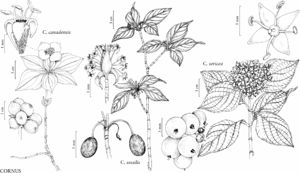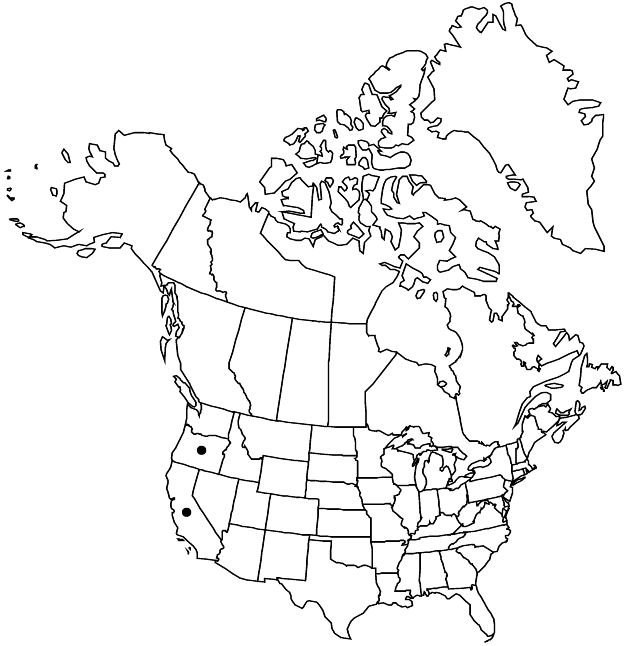Cornus sessilis
Pl. Pratten. Calif., 89. 1855.
Shrubs or trees, to 5 m, flowering at 2 m. Stems solitary; bark corky; branches splotched with maroon, brown, or red, eventually splitting along longitudinal swellings; branchlets green, densely appressed-hairy; lenticels maroon swellings, often erupting with corky surface. Leaves: petiole 5–10 mm, base encircling twig; blade elliptic, 4–9 × 2–4 cm, base cuneate, apex acute or short acuminate, abaxial surface yellow-green, appressed-hairy, tufts of erect hairs in axils of secondary veins, adaxial surface dark green, sparsely appressed-hairy; secondary veins 4–5 per side, most usually arising from basal 1/2. Inflorescences 10–15-flowered; peduncle 0–1 mm; bracts tan or brown, lanceolate, 0.5–1 cm, apex acute. Pedicels lax, apex flared. Flowers: hypanthium narrowly conic, appressed-hairy; sepals 0.1–0.5 mm; petals greenish yellow, lanceolate, 3–4 mm. Drupes maturing from green to yellow, red, then purple-black, ellipsoid, 10–15 × 5–7.5 mm; stone widely fusiform, 8–12 × 4–6 mm, with 2 lateral grooves on distal 2/3. 2n = 20.
Phenology: Flowering Mar–Jun; fruiting Aug–Sep.
Habitat: Moist ravines and stream banks.
Elevation: 60–2000 m.
Discussion
Cornus sessilis is restricted to northern California, generally in the Klamath Range, Cascade Range, and northern Sierra Nevada, and southern Oregon in the Siskiyou Mountains.
Selected References
None.

